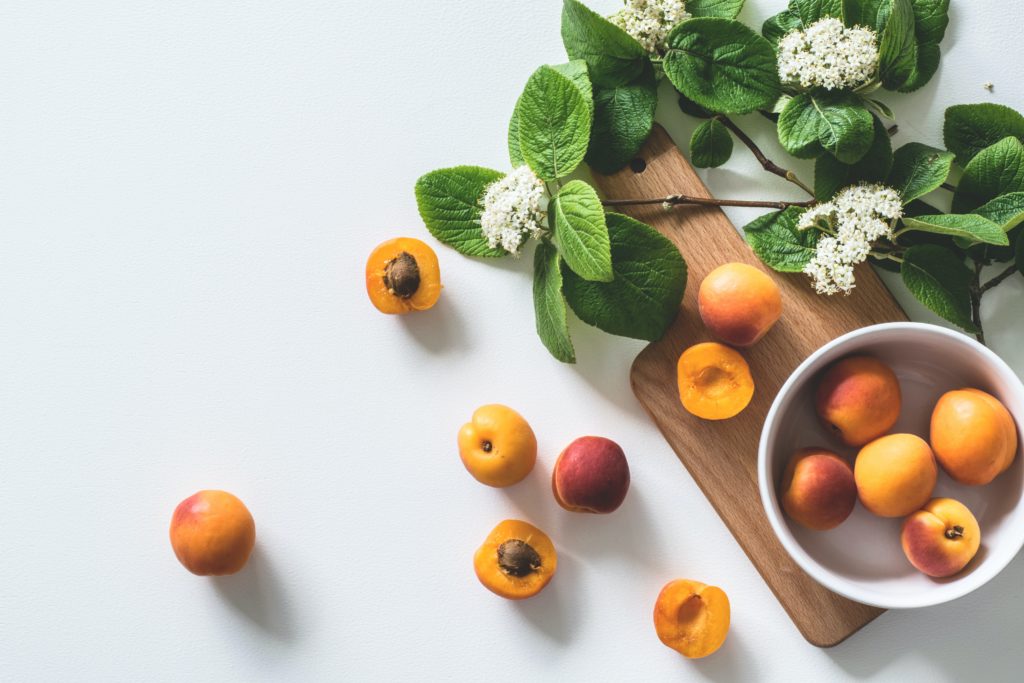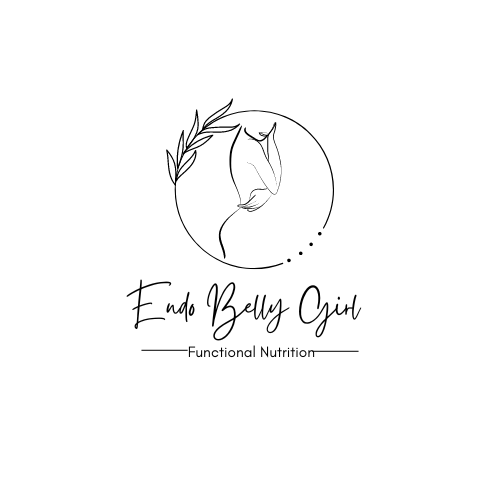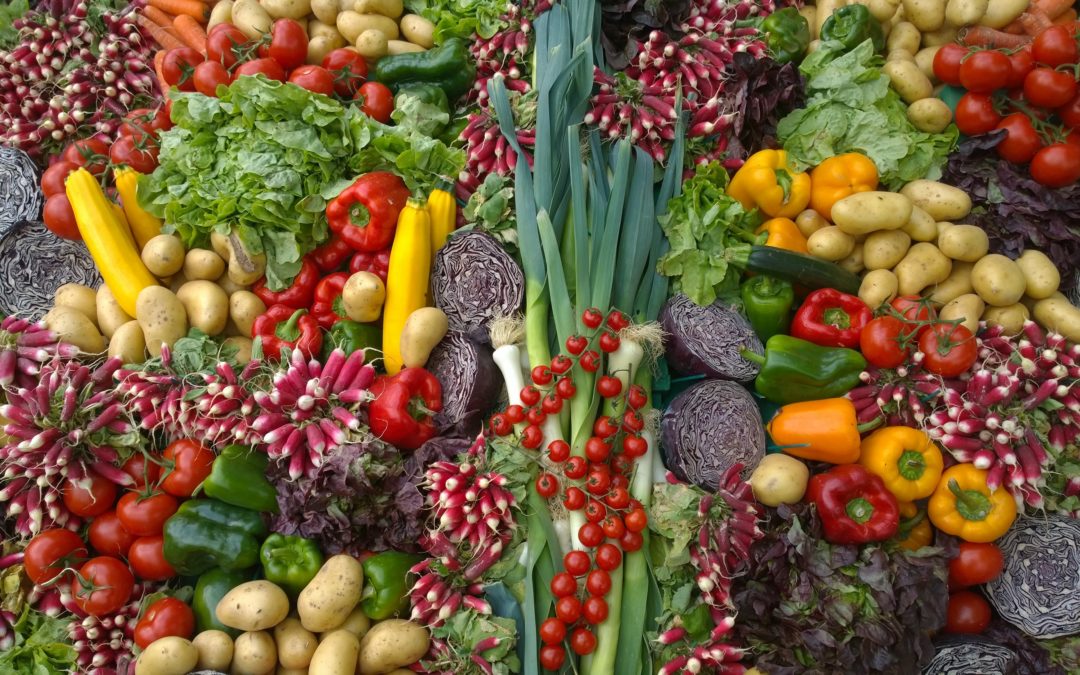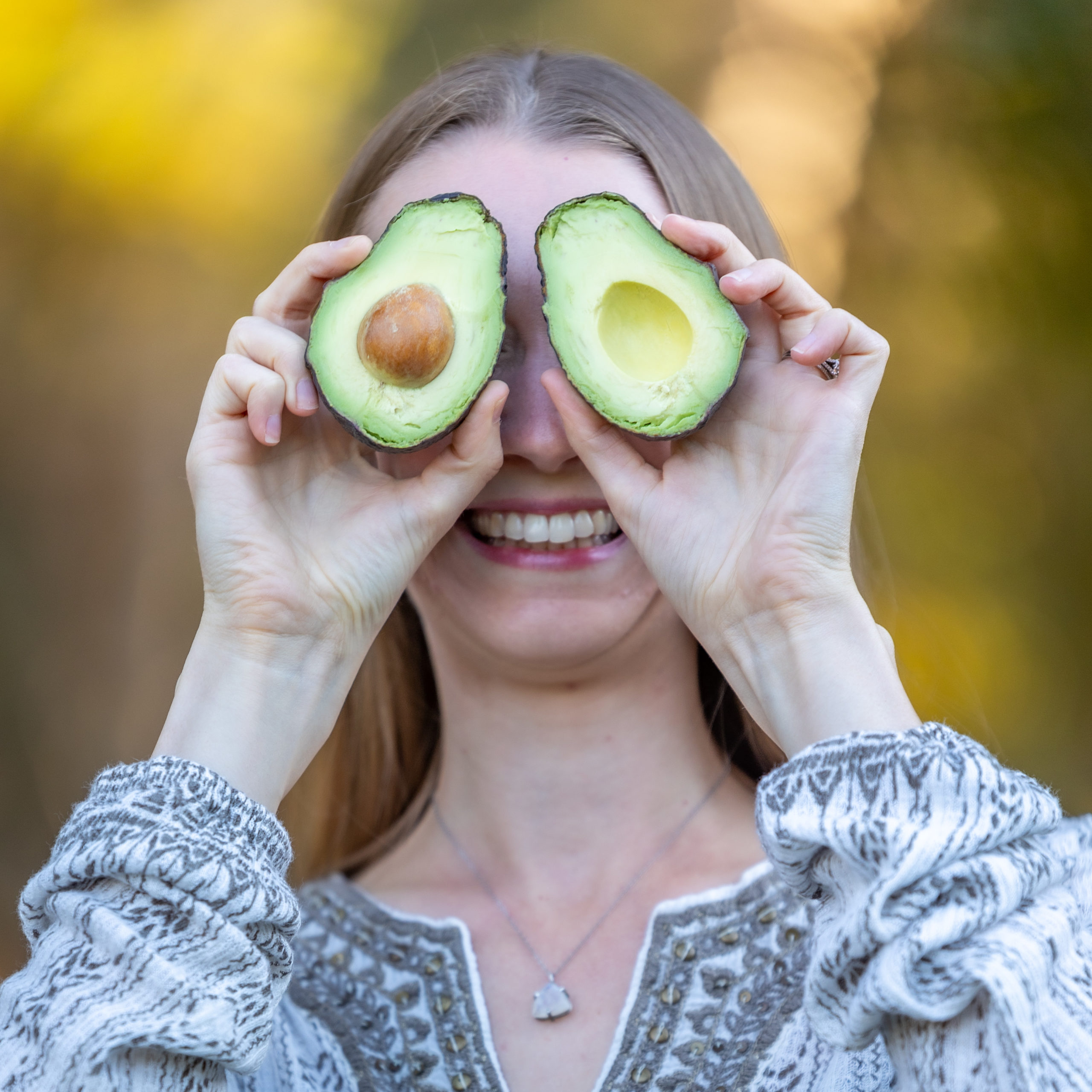As a nutrition and wellness practitioner for women with endometriosis, I always have my ear to the ground about what diets endo warriors are hearing about, trying out, and wondering about. One that I keep seeing come up lately is the low FODMAP diet. Today we are going to take a deep dive into what the low FODMAP diet is, who it is for, when and how to use it, and most importantly answering the question, “does a low FODMAP diet help endometriosis?”
What is a low FODMAP diet?
The most logical place to start of course is looking at what exactly the low FODMAP diet is. The word “FODMAP” is an acronym. It stands for Fermentable, Oligosaccharides, Disaccharides, Monosaccharides, and Polyol.
Umm…what??
And that is exactly why we use an acronym!
Basically, FODMAPs are types of sugars that are not completely digested or absorbed in our intestines. For most people this is not actually a problem.
We have bacteria in our intestines (the “good guys”) that help to break down foods that our digestive system can’t on their own.
The problem of course, is when there is dysfunction in your digestive system and so this doesn’t go well. We’ll dive into this in a bit!
Let’s take a look first at foods that are high in FODMAPs. This includes certain fruits, vegetables, dairy products, legumes and pulses, and more.
Fruits: Apples, cherries, mango, nectarines, peaches, pears, plums, watermelon, and all dried fruits
Vegetables: Artichoke, asparagus, cauliflower, garlic, green peas, mushrooms, onion, sugar snap peas
Dairy: Cow’s milk, soy milk
Most pulses/legumes: Beans, lentils, peas, lentils, chickpeas, soybeans
Breads: Wheat, rye, and barley based products
Sugars: High fructose corn syrup, honey
Nuts and seeds: Cashews, pistachios
What is the purpose of a low FODMAP diet?
The low FODMAP diet was created as a tool to help people who have been diagnosed with IBS (Irritable Bowel Syndrome). This is a condition that includes symptoms like abdominal pain, pain with bowel movements, bloating, and diarrhea or constipation.
It can also be used to address SIBO (Small Intestine Bacterial Overgrowth). Bacteria is supposed to hang out in the colon (your large intestine). That is where your microbiome thrives. In cases of SIBO, the bacteria has migrated to the small intestine instead and this can cause symptoms like bloating, abdominal pain, diarrhea, and fatigue.
Basically the idea behind the diet is to remove foods that feed certain types of “bad bacteria” or bacteria that is in the wrong place in our gut to reduce symptoms of IBS or SIBO. This can then help to reduce abdominal pain, bloating, and reduce constipation or diarrhea.
The low FODMAP diet can be a wonderful tool for healing these symptoms, with some caveats. Let’s take some time to unpack that to give you a better understanding.

What is the connection between low FODMAP and endometriosis?
If the low FODMAP diet was created for IBS and SIBO and we are talking about endometriosis…what do those have to do with each other?
Well for starters, there is a lot of overlap between IBS and SIBO and endometriosis. There is also a lot of misdiagnosis that happens though. It is very common for women to be diagnosed with IBS in particular when really it was endo all along.
If you experience a lot of IBS or SIBO symptoms, low FODMAP may be something that is beneficial for you. I also highly recommend getting a diagnosis from a licensed practitioner before you address those issues. The symptoms associated with IBS and SIBO are similar to symptoms of many other issues, so having symptoms like bloating and abdominal pain alone is not enough to actually know if you have one of these conditions.
If that is the case though, learning to use this tool correctly is super important as well!
How to use the low FODMAP diet
This is the most critical piece of the puzzle that so many people miss. Low FODMAP is not intended to be a long-term plan.
Low FODMAP is a therapeutic diet that is intended to be used in the short term during a healing protocol. That is it. What is short term? Usually somewhere between 2-8 weeks, depending on your unique situation.
Why does this matter? You may have noticed in the list above that there are a lot of foods on the FODMAP list. Some of those are foods that are better avoided anyway, like high fructose corn syrup.
But all of the fruits and veggies? The legumes? The nuts and seeds? These actually have so many nutrients and health benefits, so cutting them out in the long term can end up leading to nutrient deficiencies.
What happens when you start experiencing nutrient deficiencies? You feel worse. These can show up in so many different ways because it absolutely depends on which nutrients you are deficient in and how your body responds. But your body needs nutrients to produce everything from digestive juices to hormones to nerve signals to building muscles and bones and more.
You also need nutrients to carry out all of the functions you need like digestion, cardiovascular function, reproduction…basically everything your body does!
One of the key elements of a healthy diet is one that is nutrient dense. That means you are eating a wide variety of fruits and vegetables, nuts and seeds, and protein sources.
Eating any kind of super restrictive diet makes that really, really hard.
Does that mean you should never use low FODMAP or anything similar? No! But it does mean that if you use these tools that you should do so mindfully.

What does it look like to use the low FODMAP diet?
My biggest recommendation is to do a diet like this under the guidance of a knowledgeable practitioner.
Going it alone means you will be doing a lot of guesswork and can result in leaving you feeling worse than when you started.
But to give you a picture, here is what using a low FODMAP diet as a therapeutic tool can look like:
- Start by removing all foods on the low FODMAP list. When doing an elimination diet like this, you want to remove all the foods at the same time, not in phases.
- At the same time, work on feeding the good bacteria in your gut by eating as much variety of foods as possible, working within the limitations of the low FODMAP diet. Focus on veggies and high quality protein and fats!
- Also work on healing and soothing your gut at the same time. I have supplements I like to use with my clients in my practice, but if this is not available to you, even eating gut nourishing foods and herbs like bone broth, collagen, and slippery elm can make a difference.
- Follow this protocol for anywhere between 2-8 weeks.
- At the end of your protocol, reintroduce foods slowly. Introduce one food from your list, then wait a full 72 hours before reintroducing the next one. Look for any reactions in your body in the meantime. Pay special attention to which category of FODMAPs each food is in. Some people may end up being sensitive to foods in the Fermentable category only for example and be perfectly fine with all the other foods.
- Remember that your end goal is to be able to eat as many foods as possible, NOT to be on a restrictive diet for life.
The real question of the day…does the low FODMAP diet help endometriosis?
The real answer…it depends!
I know, I know, everyone hates that answer. But there is just not a one-size-fits-all answer here.
If you really struggle with IBS or SIBO symptoms, it is possible that low FODMAP may be helpful in the short term.
It is also important to recognize that low FODMAP isn’t everything. It can be a piece of the puzzle, but not an end-all-be-all solution. At the end of the day, diet alone can’t actually kill off the wrong type of bacteria that is in your gut.
I know, we all wish there was one tool, one magic diet that we could use that would heal our endo symptoms. But the truth is that endo is a full body disease and it is complex. Finding a place of healing means looking in all the places, leaving no stone unturned.
Personally, I have found a lot of empowerment in being able to do that for myself and for my clients. I love knowing that there is so much I can do to support my own body and my own health. Finding new stones to turn over is my favorite thing.
Okay that is not entirely true. My real favorite thing? Feeling great! Healing my body has helped me find more energy and feel great in ways that I never really thought possible with endo.
Sending you lots of love on your healing journey and I hope that you are able to find a place of feeling great as well!
Do you feel like you have already tried all the diets and all the things and still feel bloated, tired, and in pain all the time? I would love to support you on your healing journey. Click here to learn more about working with me 1:1 inside of my Thrive With Endo program and apply today.
Much love!

Other Articles You Might Enjoy:
Fatigue and Endometriosis: What Can We Do?
Endometriosis and Gluten: What You Need to Know
References:
Monash University Research Team. About FODMAPs and Irritable Bowel Syndrome. Retrieved from: https://www.monashfodmap.com/about-fodmap-and-ibs/
National Institute of Health. (2017). Symptoms and Causes of Irritable Bowel Syndrome. Retrieved from: https://www.niddk.nih.gov/health-information/digestive-diseases/irritable-bowel-syndrome/symptoms-causes
Chiaffarino, Francesca; Cipriani, Sonia; Ricci, Elena; Mauri, Paola Agnese; Esposito, Giovanna; Barretta, Marta; Vercellini, Paolo; Parazzini, Fabio. (2021). Endometriosis and irritable bowel syndrome: a systematic review and meta-analysis. Retrieved from: https://pubmed.ncbi.nlm.nih.gov/32949284/
Chiaffarino, Francesca; Cipriani, Sonia; Ricci, Elena; Mauri, Paola Agnese; Esposito, Giovanna; Barretta, Marta; Vercellini, Paolo; Parazzini, Fabio. (2021). Endometriosis and irritable bowel syndrome: a systematic review and meta-analysis. Retrieved from: https://pubmed.ncbi.nlm.nih.gov/32949284/


